1-Piperidinecarbonitrile

1-Piperidinecarbonitrile structure
|
Common Name | 1-Piperidinecarbonitrile | ||
|---|---|---|---|---|
| CAS Number | 1530-87-6 | Molecular Weight | 110.15700 | |
| Density | 1g/cm3 | Boiling Point | 228.1ºC at 760mmHg | |
| Molecular Formula | C6H10N2 | Melting Point | N/A | |
| MSDS | Chinese USA | Flash Point | 97.2ºC | |
| Symbol |

GHS07 |
Signal Word | Warning | |
| Name | piperidine-1-carbonitrile |
|---|---|
| Synonym | More Synonyms |
| Density | 1g/cm3 |
|---|---|
| Boiling Point | 228.1ºC at 760mmHg |
| Molecular Formula | C6H10N2 |
| Molecular Weight | 110.15700 |
| Flash Point | 97.2ºC |
| Exact Mass | 110.08400 |
| PSA | 27.03000 |
| LogP | 0.89128 |
| Vapour Pressure | 0.0747mmHg at 25°C |
| Index of Refraction | n20/D 1.47(lit.) |
Synonym:None Known Section 2 - COMPOSITION, INFORMATION ON INGREDIENTS
Risk Phrases: 20/21/22 36/37/38 Section 3 - HAZARDS IDENTIFICATION EMERGENCY OVERVIEW
Harmful by inhalation, in contact with skin and if swallowed. Irritating to eyes, respiratory system and skin. Potential Health Effects Eye: Causes eye irritation. May cause chemical conjunctivitis. Skin: Causes skin irritation. Harmful if absorbed through the skin. May be metabolized to cyanide which in turn acts by inhibiting cytochrome oxidase impairing cellular respiration. Ingestion: May cause gastrointestinal irritation with nausea, vomiting and diarrhea. May cause cardiac disturbances. May cause central nervous system depression. Metabolism may release cyanide, which may result in headache, dizziness, weakness, collapse, unconsciousness and possible death. Inhalation: Causes respiratory tract irritation. May cause cardiac abnormalities. Can produce delayed pulmonary edema. May be metabolized to cyanide which in turns act by inhibiting cytochrome oxidase impairing cellular respiration. Inhalation at high concentrations may cause CNS depression and asphixiation. Chronic: May be metabolized to cyanide which in turn acts by inhibiting cytochrome oxidase impairing cellular respiration. Effects may be delayed. Chronic exposure to cyanide solutions may lead to the development of a "cyanide" rash, characterized by itching, and by macular, papular, and vesicular eruptions, and may be accompanied by secondary infections. Section 4 - FIRST AID MEASURES Eyes: Immediately flush eyes with plenty of water for at least 15 minutes, occasionally lifting the upper and lower eyelids. Get medical aid. Skin: Get medical aid. Flush skin with plenty of water for at least 15 minutes while removing contaminated clothing and shoes. Wash clothing before reuse. Ingestion: Never give anything by mouth to an unconscious person. Get medical aid. Do NOT induce vomiting. If conscious and alert, rinse mouth and drink 2-4 cupfuls of milk or water. Inhalation: Remove from exposure and move to fresh air immediately. If breathing is difficult, give oxygen. Get medical aid. Do NOT use mouth-to-mouth resuscitation. If breathing has ceased apply artificial respiration using oxygen and a suitable mechanical device such as a bag and a mask. Notes to Physician: Treat symptomatically and supportively. May be partially metabolized to cyanide in the body. Antidote: Always have a cyanide antidote kit on hand when working with cyanide compounds. Get medical advice to use. Section 5 - FIRE FIGHTING MEASURES General Information: As in any fire, wear a self-contained breathing apparatus in pressure-demand, MSHA/NIOSH (approved or equivalent), and full protective gear. Vapors may form an explosive mixture with air. During a fire, irritating and highly toxic gases may be generated by thermal decomposition or combustion. Vapors may be heavier than air. They can spread along the ground and collect in low or confined areas. Containers may explode when heated. Combustible material; may burn but does not ignite readily. Runoff from fire control or dilution water may cause pollution. Extinguishing Media: Use water spray to cool fire-exposed containers. Do NOT get water inside containers. For small fires, use dry chemical, carbon dioxide, or water spray. For large fires, use dry chemical, carbon dioxide, alcohol-resistant foam, or water spray. Use water spray, dry chemical, carbon dioxide, or appropriate foam. Section 6 - ACCIDENTAL RELEASE MEASURES General Information: Use proper personal protective equipment as indicated in Section 8. Spills/Leaks: Absorb spill with inert material (e.g. vermiculite, sand or earth), then place in suitable container. Avoid runoff into storm sewers and ditches which lead to waterways. Clean up spills immediately, observing precautions in the Protective Equipment section. Provide ventilation. Section 7 - HANDLING and STORAGE Handling: Avoid breathing dust, vapor, mist, or gas. Avoid contact with eyes, skin, and clothing. Keep container tightly closed. Avoid ingestion and inhalation. Use with adequate ventilation. Wash clothing before reuse. Storage: Store in a tightly closed container. Store in a cool, dry, well-ventilated area away from incompatible substances. Section 8 - EXPOSURE CONTROLS, PERSONAL PROTECTION Engineering Controls: Facilities storing or utilizing this material should be equipped with an eyewash facility and a safety shower. Use adequate ventilation to keep airborne concentrations low. Exposure Limits CAS# 1530-87-6: Personal Protective Equipment Eyes: Wear appropriate protective eyeglasses or chemical safety goggles as described by OSHA's eye and face protection regulations in 29 CFR 1910.133 or European Standard EN166. Skin: Wear appropriate protective gloves to prevent skin exposure. Clothing: Wear appropriate protective clothing to prevent skin exposure. Respirators: Follow the OSHA respirator regulations found in 29 CFR 1910.134 or European Standard EN 149. Use a NIOSH/MSHA or European Standard EN 149 approved respirator if exposure limits are exceeded or if irritation or other symptoms are experienced. Section 9 - PHYSICAL AND CHEMICAL PROPERTIES Physical State: Clear liquid Color: clear almost colorless Odor: Not available. pH: Not available. Vapor Pressure: Not available. Viscosity: Not available. Boiling Point: 102 deg C @ 10.00mmHg Freezing/Melting Point: Not available. Autoignition Temperature: Not applicable. Flash Point: 97 deg C ( 206.60 deg F) Explosion Limits, lower: Not available. Explosion Limits, upper: Not available. Decomposition Temperature: Solubility in water: Specific Gravity/Density: .9510g/cm3 Molecular Formula: Molecular Weight: 110.16 Section 10 - STABILITY AND REACTIVITY Chemical Stability: Stable at room temperature in closed containers under normal storage and handling conditions. Conditions to Avoid: Incompatible materials, excess heat, strong oxidants. Incompatibilities with Other Materials: Strong acids, strong bases, strong oxidizing agents, strong reducing agents. Hazardous Decomposition Products: Carbon monoxide, oxides of nitrogen, irritating and toxic fumes and gases, carbon dioxide. Hazardous Polymerization: Has not been reported Section 11 - TOXICOLOGICAL INFORMATION RTECS#: CAS# 1530-87-6 unlisted. LD50/LC50: Not available. Carcinogenicity: 1-Piperidinecarbonitrile - Not listed by ACGIH, IARC, or NTP. Section 12 - ECOLOGICAL INFORMATION Section 13 - DISPOSAL CONSIDERATIONS Dispose of in a manner consistent with federal, state, and local regulations. Section 14 - TRANSPORT INFORMATION IATA Shipping Name: TOXIC LIQUID, ORGANIC, N.O.S.* Hazard Class: 6.1 UN Number: 2810 Packing Group: III IMO Shipping Name: TOXIC LIQUID, ORGANIC, N.O.S. Hazard Class: 6.1 UN Number: 2810 Packing Group: III RID/ADR Shipping Name: TOXIC LIQUID, ORGANIC, N.O.S. Hazard Class: 6.1 UN Number: 2810 Packing group: III Section 15 - REGULATORY INFORMATION European/International Regulations European Labeling in Accordance with EC Directives Hazard Symbols: XN Risk Phrases: R 20/21/22 Harmful by inhalation, in contact with skin and if swallowed. R 36/37/38 Irritating to eyes, respiratory system and skin. Safety Phrases: S 26 In case of contact with eyes, rinse immediately with plenty of water and seek medical advice. S 36/37/39 Wear suitable protective clothing, gloves and eye/face protection. WGK (Water Danger/Protection) CAS# 1530-87-6: No information available. Canada None of the chemicals in this product are listed on the DSL/NDSL list. CAS# 1530-87-6 is not listed on Canada's Ingredient Disclosure List. US FEDERAL TSCA CAS# 1530-87-6 is not listed on the TSCA inventory. It is for research and development use only. SECTION 16 - ADDITIONAL INFORMATION N/A |
| Symbol |

GHS07 |
|---|---|
| Signal Word | Warning |
| Hazard Statements | H302 + H312 + H332-H315-H319-H335 |
| Precautionary Statements | P261-P280-P305 + P351 + P338 |
| Personal Protective Equipment | Eyeshields;Faceshields;full-face respirator (US);Gloves;multi-purpose combination respirator cartridge (US);type ABEK (EN14387) respirator filter |
| Hazard Codes | Xn: Harmful; |
| Risk Phrases | R20/21/22;R36/37/38 |
| Safety Phrases | S26-S36/37/39 |
| RIDADR | UN 3276 |
| Packaging Group | III |
| Hazard Class | 6.1(b) |
| HS Code | 2933399090 |
| Precursor 10 | |
|---|---|
| DownStream 8 | |
| HS Code | 2933399090 |
|---|---|
| Summary | 2933399090. other compounds containing an unfused pyridine ring (whether or not hydrogenated) in the structure. VAT:17.0%. Tax rebate rate:13.0%. . MFN tariff:6.5%. General tariff:20.0% |
|
A highly efficient titanium-based olefin polymerisation catalyst with a monoanionic iminoimidazolidide pi-donor ancillary ligand.
Chem. Commun. (Camb.) (6) , 608-9, (2002) The titanium complex Cp[1,3-(2',6'-Me2C6H3)2(CH2N)2C=N]Ti(CH2Ph)2, with a monoanionic eta 1-iminoimidazolidide ancillary ligand, is shown to be a highly efficient catalyst for olefin polymerisation wh... |
|
|
Reactions of transiently formed nitrilium phosphanylide chromium, molybdenum, and tungsten complexes with heterocumulenes. Streubel R and Neumann C.
Heteroatom Chem. 13(1) , 72-6, (2002)
|
|
|
A novel de-O-chloroacetylation reagent: 1-seleonocarbamoylpiperidine. Sogabe S, et al.
Tetrahedron Lett. 47(37) , 6603-6, (2006)
|
| EINECS 216-233-8 |
| 1-piperidino carbonitrile |
| azacyclohexylcarbonitrile |
| 1-Cyanopiperidine |
| 1-Piperidinecarbonitrile |
| 1-piperidinylcarbonnitrile |
| Pentamethylenecyanamide |
| N-piperidine-carbonitrile |
| piperidinecarbonitrile |
| N-cyanopiperidine |
| Piperidinocarbonitrile |
| MFCD00006477 |
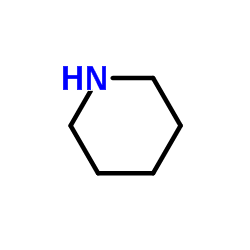 CAS#:110-89-4
CAS#:110-89-4 CAS#:506-68-3
CAS#:506-68-3 CAS#:2158-03-4
CAS#:2158-03-4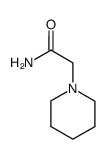 CAS#:1622-87-3
CAS#:1622-87-3 CAS#:151-50-8
CAS#:151-50-8 CAS#:89026-71-1
CAS#:89026-71-1 CAS#:542-90-5
CAS#:542-90-5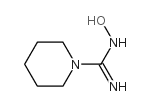 CAS#:29044-24-4
CAS#:29044-24-4![(1H-benzo[d][1,2,3]triazol-1-yl)(piperidin-1-yl)methanimine Structure](https://image.chemsrc.com/caspic/154/656835-57-3.png) CAS#:656835-57-3
CAS#:656835-57-3 CAS#:626-67-5
CAS#:626-67-5 CAS#:6280-32-6
CAS#:6280-32-6 CAS#:618-42-8
CAS#:618-42-8 CAS#:14294-09-8
CAS#:14294-09-8 CAS#:16268-88-5
CAS#:16268-88-5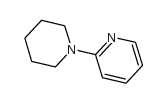 CAS#:68654-52-4
CAS#:68654-52-4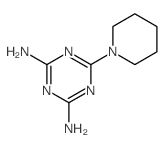 CAS#:5606-32-6
CAS#:5606-32-6